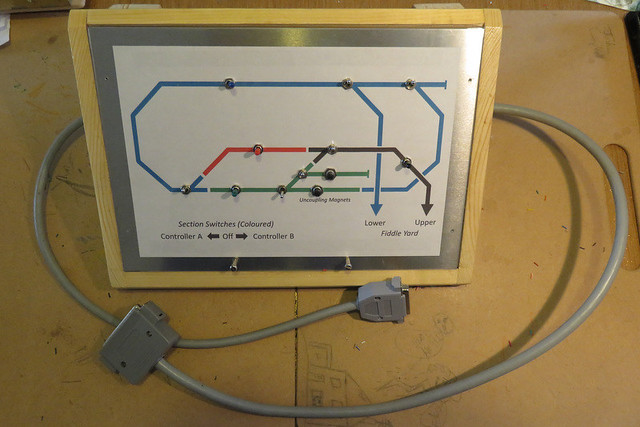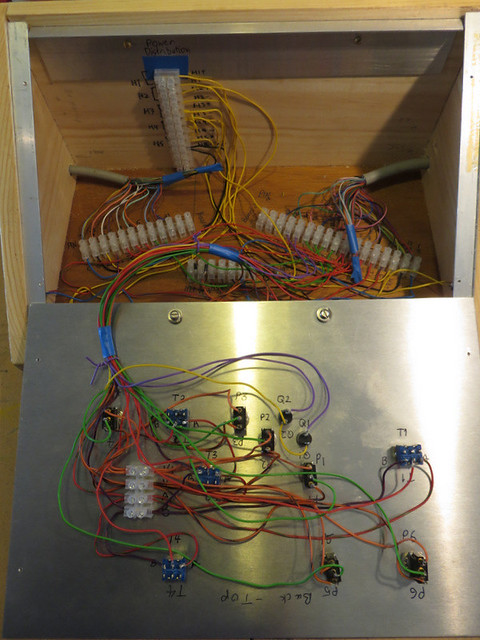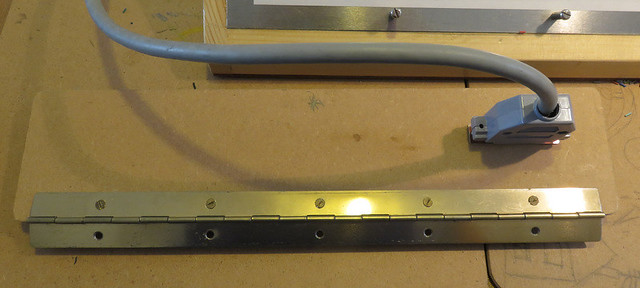Not much activity on my own modelling projects recently, but I have completed a building for our club 009 layout. It's a small warehouse, store, or industry that will sit alongside a siding. A cardboard mock-up had been used to determine the size and shape that both looked right, and disguised another track exiting behind it.
The basic shell is made from Wills brick sheets with chamfered corners, Wills windows, and plasticard used for an internal floor and loading platform. Sills, lintels, doors and a sliding door rail cover are made from thinner plastic, and a lifting beam projecting from a first floor door has been added from Plastruct and scrap plastic.
Painting used artists acrylics. After an overall coat of brick orange/brown, random individual bricks were picked out in varying shades of red, orange, brown, and dark brown/black. A beige/sand mortar colour was mixed a little thinner and flooded onto the brickwork (see right), then wiped off using kitchen towel in a diagonal motion (see left), leaving the mortar colour in the courses while removing most from the face of the bricks.
For variety and to emphasise the building's utilitarian nature, a corrugated iron roof was decided upon. This was also made from Wills sheets, with a foil ridge, plasticard barge boards and gutters (the outer lower corner of a 1mm strip is rounded off to look half-round). I've had this set of rust effect paints in a while and this seemed a good chance to use them.
I primed the plastic with automotive red primer, then worked through the colours in the airbrush as per the instructions - with random patches and density. The process was quick, I just flushed some water through the airbrush and moved on to the next colour.
I applied the chipping medium by brush, allowing me to create patches and streaks that align to the edges of the panels. I expect spraying would allow more random outbreak of rust. Once dry, the top coat of off-black (with a little grey) was airbrushed on.
The chipping was done with a wet brush, and the end of a wooden coffee stirrer which proved very effective. As the end blunted, it shaped to the corrugations.
The result seems quite effective, although perhaps the rust could have more texture. Thanks to the mock-ups the building has pleasing, squat, proportions, and the mix of brick and corrugated iron along with details such as the sliding doors and lifting beam give an industrial feel.
It may be a little while until it is permanently fixed to the under-construction layout...




















